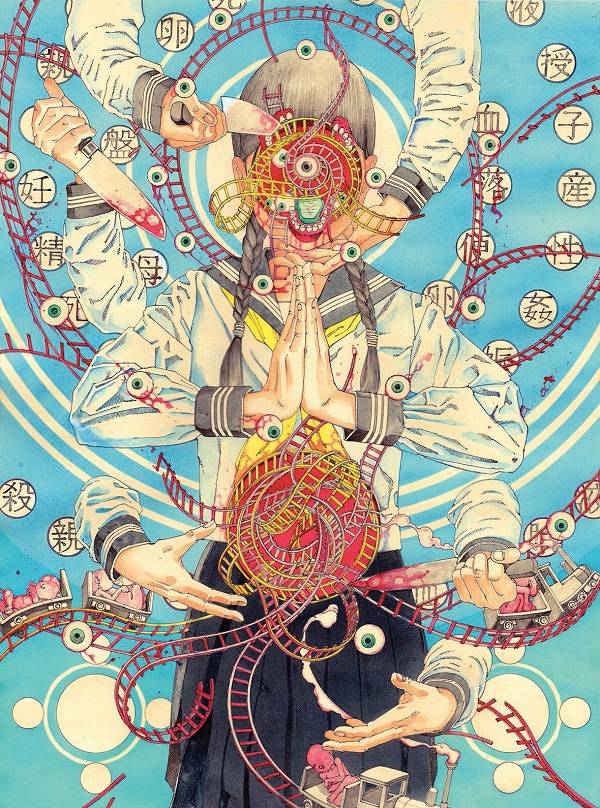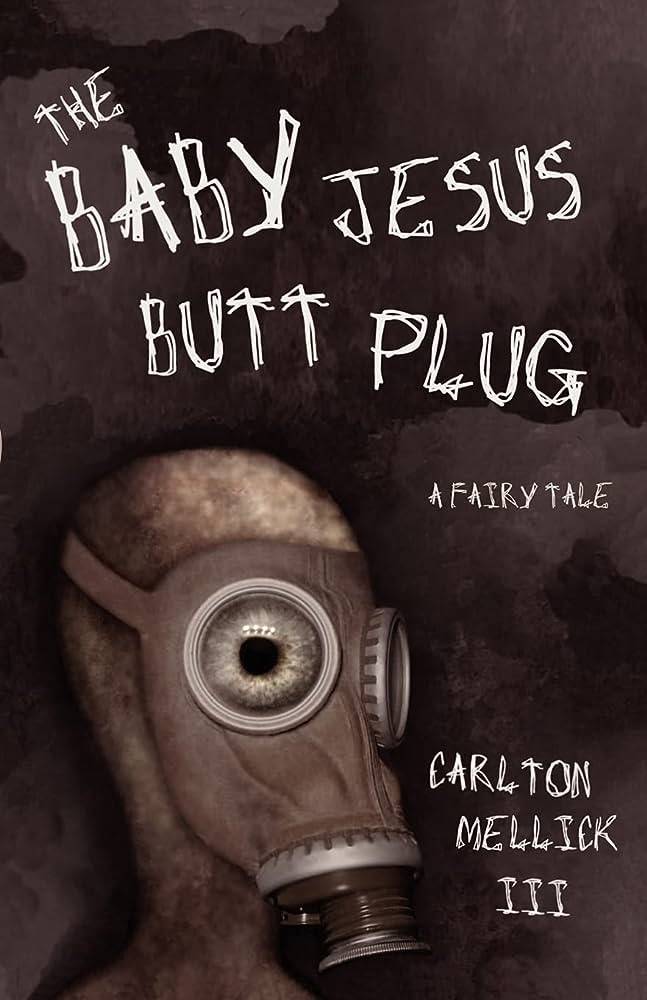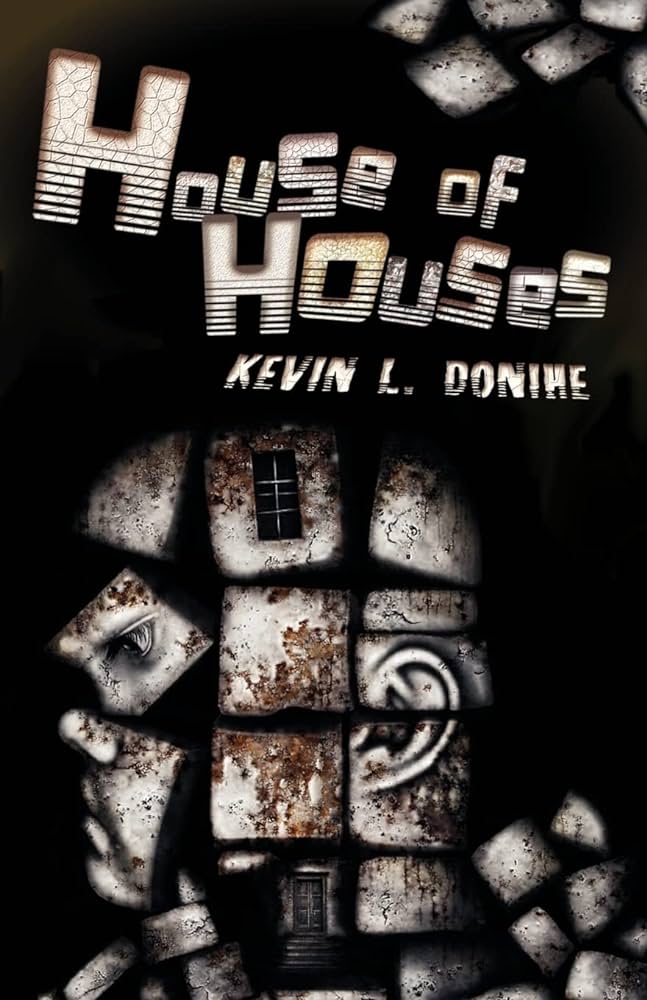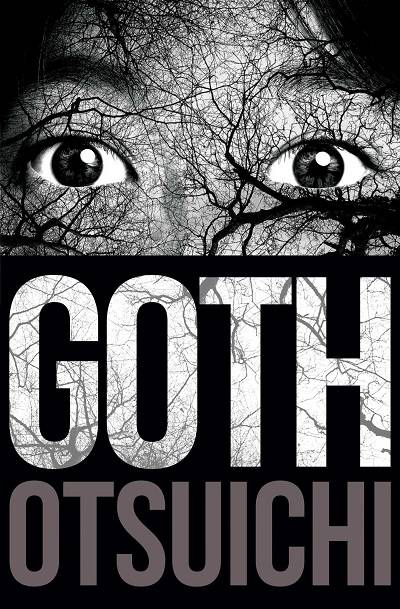Literature is no short of weird genres, ranging from New Weird and Literary Nonsense to Ergodic Literature and Incoherent Writing. The books of such genres evoke the most intense emotions in readers, challenging their perception of the bizarre. But standing somewhere on this range are two genres, possibly the weirdest of all – Bizarro Fiction and Ero Guro.
The two genres come from opposite ends of the world but have similar yet different characteristics at the same time. One thing is for sure – both Bizarro Fiction and Ero Guro will unsettle you in the most bewitching way possible!
Firstly, what is Bizarro Fiction?
Bizarro fiction may be the genre of the weird, but it will put your brain at work. This contemporary genre mixes absurdism, grotesque, satire, pop-fiction and surrealism elements to create the eeriest novels. Imagine how cartoons and their absurd logic would look into the real world – that is how bizarro fiction works. As is evident, there are no limits to how far this genre can go; the universe is the limit!
This genre came into existence as a rebellion against the conventional methods of book writing. Many writers and readers felt the need to step out of the conventional storytelling format and let the weirdness seep in. However, the traditional publishers were not ready to take such a risk. This led to an increase in the number of independent publishers who agreed to publish bizarro fiction texts.
Books of this genre have been around since the late 90s. But it was officially named in 2005 as a joint effort by indie publishers Eraserhead Press, Afterbirth Books, and Raw Dog Screaming Press. This genre has a massive yet tight-knit community, functioning as an underground cult prospered by these publishers. Moreover, Eraserhead Press started BizarroCon in 2008, a place to meet and interact with fellow genre lovers.
If you want a real example of how weird it can get, just read the titles of bizarro fiction texts! Satan Burger, The Baby Jesus Buttplug, and Rampaging Fuckers of Everything on the Crazy Shitting Planet of the Vomit Atmosphere.
The Genre of Ero(tic) – Guro(tesque)
Ero-Guro emerged in Japanese art and literature in the early 1900s, exploring themes of eroticism, immorality, and decay. The term may seem a bit funny and not Japanese. But that’s because it’s a wasei-eigo – Japanese words derived from English words – putting erotic and grotesque together.
The grotesque in ero-guro is a lot different than what the Western concept is. It is not just about the horror, blood, or disturbing sexual content but the shock you would feel after experiencing the grotesque or erotic art. As a result, unlike what it seems, it is not necessarily related to pornographic or violent works and vice versa.
Japan was undergoing rapid social change during the 1920s and 30s, a result of Western influence. This led to the birth of the ero guro nansensu (erotic-grotesque-nonsense) movement, which originated from ero guro itself. Ero-guro was primarily an artistic genre but filtered into different media, especially literature and cinema. The ero guro books and manga, which were heavily suppressed during the ero guro nansensu movement, are now mostly available in digital formats.
How do Bizarro Fiction and Ero Guro differ?
On the weirdness scale, these two genres can take the topmost position easily. However, there are a few elements that help categorize them into two starkly different moulds.
Even after having similar elements, ero guro emerged as early as the 1920s. But bizarro fiction came into existence in the late 20th century, the term being coined as early as the 2000s. The two genres are decades apart and reflect the social and literary climate they were birthed in.
One of the biggest, most obvious differences between these two genres is their cultural origin. Bizarro fiction originated from Western culture, with Western values visible in every word of the texts. There is a direct influence of pop culture and individualism, as well as the depiction of grave issues in a satirizing manner.
On the other hand, ero-guro is a Japanese genre developed as a defence against the growing Westernization of the country. However, it is not entirely Japanese; the genre does have a Western impact on the texts. It is evident in the influence of Western movements of decadence and Gothicism in the titles of ero-guro. But it also places itself in the walls of social and legal constraints of Japanese culture by using symbolism and allegory in the texts.
Another stark difference is that Bizarro fiction focuses more on surrealism and subversive, with little to no influence of eroticism. It can be a theme of the work but will be explored in a satirical or absurdist way. Eroticism here is mostly used as a way to comment on society or even sexual taboos, often in a humorous way.
As opposed to this, ero guro is rooted in eroticism. It is not a surprise that this genre dabbles extensively in dark and sensual themes. Why? Because Japanese literature has always explored eroticism and grotesque explicitly. But ero-guro is different because the meaning of created work is supposed to be nonsensical but shocking. It then doesn’t matter if the theme is sexual corruption, decadence or grotesque.
Unfortunately, its exact ethos has been taken out of context many times. In fact, ero guro has now become a means for misogynistic commentary, fuelled by artworks showing grotesque violence only against women.
Exploring the Difference through Examples
Another way to compare these genres is by analysing their works. For example, House of Houses by Kevin L. Donihe introduces Carlos, who falls for his own house, Helen. He’s so in love that he’s drilled a hole in the wall to consummate their wedding night. But before he can act on his plan, he finds his house and everything around crumbled. Naturally, Carlos goes crazy, ultimately going to a place called House Heaven to save his deceased love. The narrative then descends into crazy stuff, such as house-to-house sex and an anti-human, pro-houses regime.
The book offers commentary on government, relationships and sexuality, all through an absurdist world. It is peppered with dark humour and a deeper exploration of the human spirit. The elements come together in this novella to serve something weird – but on the lighter side of the spectrum.
Now, focus on an example of ero guro fiction, Goth, by Otsuichi. It’s a collection of short stories that follows the story of two high school students. The two students are fascinated by the darker side of humanity – the murder and the macabre. They go around investigating disturbing crimes, from a serial killer to grisly pet abduction. While most people would shrivel up in the face of such crimes, the two enjoy the grotesque aspect of it.
The collection delves into the wildest recesses of humanity, asking questions about the motivation behind killing and torturing. It has a dispassionate narration, made even more disturbing by the fact that the main characters are teenagers. But it will throw shocking twists in your face, along with a bloody spatter of eerie mysteries, creepy characters, and torture porn.
Final Words
Assuming bizarro fiction and ero guro are similar is understandable, given its few similarities. This likeness, though, is on a surface level; the difference lies in the very essence of both genres. One of them fiddles with whimsical surrealism, while the other focuses on the erotic, grotesque and sometimes nonsense.
But both the genres aim to provoke that shock in readers one may feel after encountering something unconventionally macabre. And in their own way, bizarro fiction and ero guro succeed in it beautifully!





Wow. Have never known about these but this articles wants me to actually check this out!